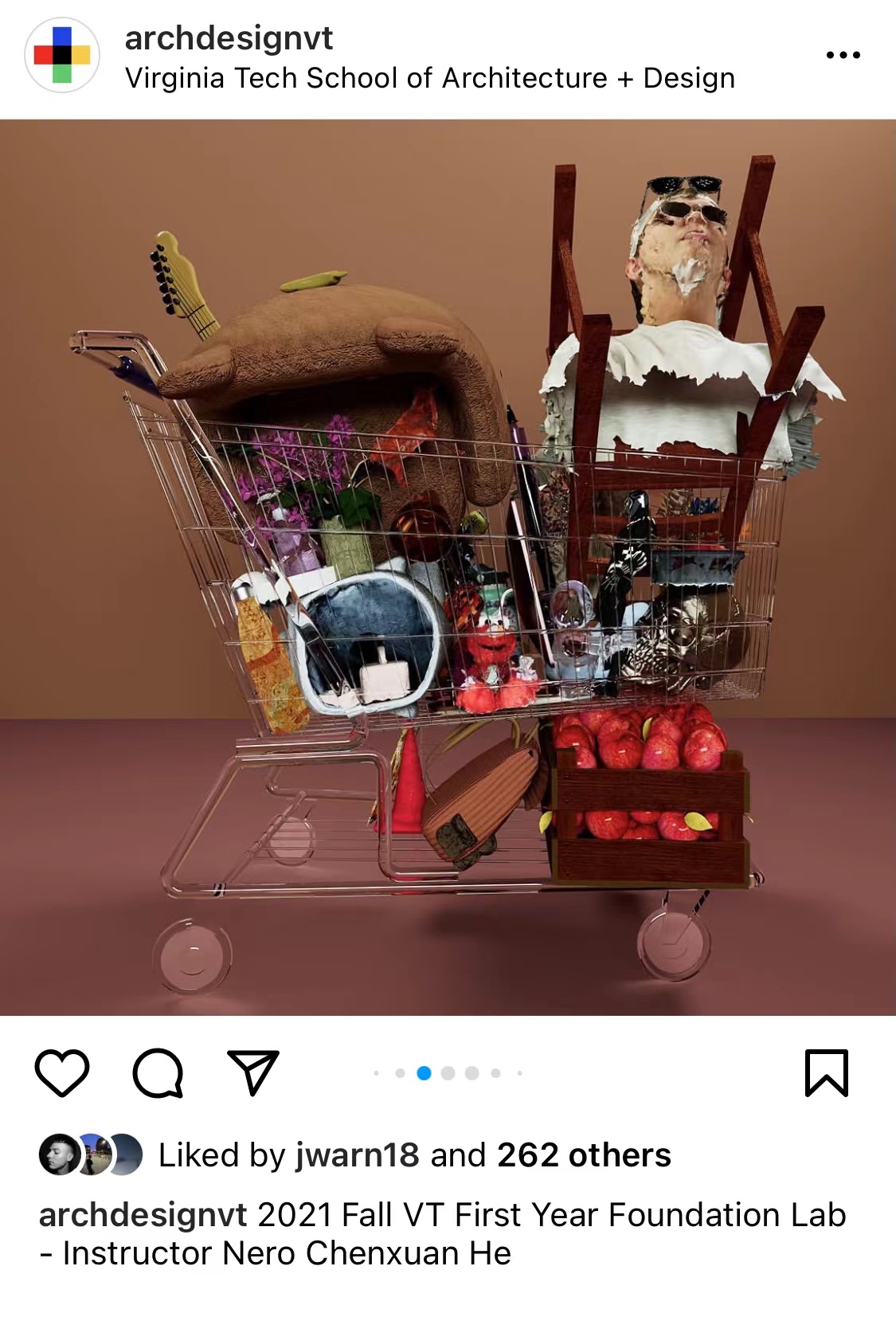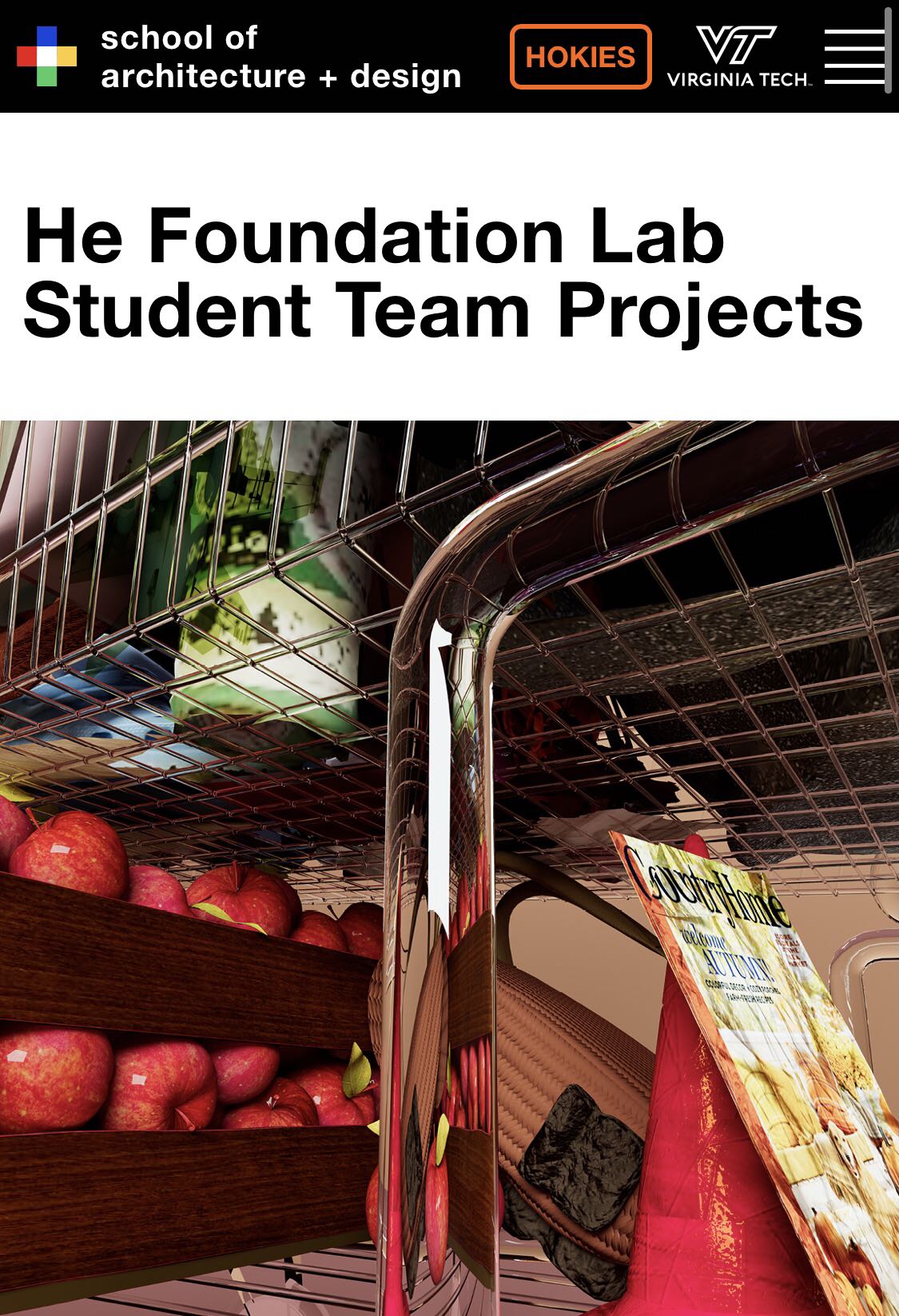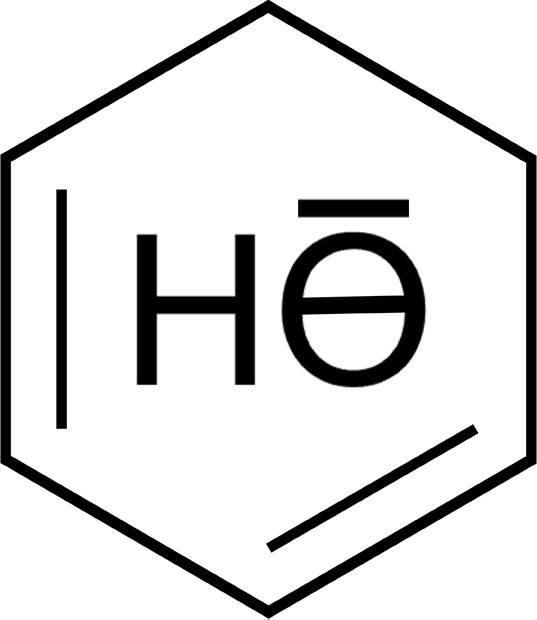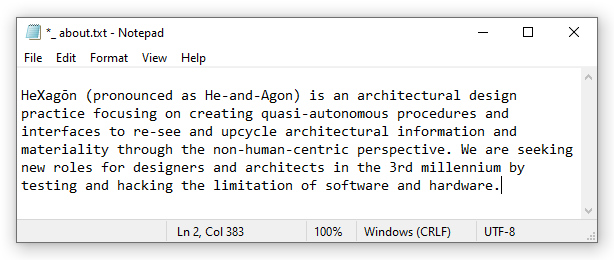_ He foundation lab student team projects
tag: [media] [press] [teaching] [phygital] [digi] [virginiatech]
date: 20211025
internal link: 21FA VT He foundation lab
external link: archdesign.caus.vt.edu; instagram.archdesignvt;
class: 2021 fall VT first year foundation lab
instructor: Nero Chenxuan He
students: Adam Greenfield, Annie Potter, Brynn Lyons, Daphne Longmire, Ellis Pitts, Fernando Rosales, Ilan Farahi, Jeremiah Covington, Julia Briner, Julia Groves, Justin Stange, Kathleen Senus, Kobe Stokes, Maddy Privett, Noah LeCain, Raul Calderon-Merlos, Rielle Abellera, Ryan Barrett, Sabina Osterman, Sofia Llanos


20211025 /press/
He foundation lab student team projects at Virginia Tech
2021 Fall VT First Year Foundation Lab Instructor Nero Chenxuan He
With the idea that we are in the world of “Big Flat Now”, “the information we make and share travels through media that lack hierarchy or centrality. There is no principal authority, no recognized arbitrator, and no centralized archive”. Using photogrammetry software as a tool, each student has created the digital twin of each physical object they have collected. They have individually archived each digital collection in various ways, including its dimensions, form, scale, physical weight, digital weight, etc.
For this project, students are collaborating with their peers in teams. They share resources and archived objects, then relocate and redefine each object from the new collection in a digitally modeled shopping cart with curatorial techniques to upcycle the “digital waste”. For this presentation, they are focusing on the still-life quality of the overflowed shopping cart with digital renderings and vector drawings to seek for the new format to represent such a unique design approach.
He foundation lab student team projects at Virginia Tech
2021 Fall VT First Year Foundation Lab Instructor Nero Chenxuan He
With the idea that we are in the world of “Big Flat Now”, “the information we make and share travels through media that lack hierarchy or centrality. There is no principal authority, no recognized arbitrator, and no centralized archive”. Using photogrammetry software as a tool, each student has created the digital twin of each physical object they have collected. They have individually archived each digital collection in various ways, including its dimensions, form, scale, physical weight, digital weight, etc.
For this project, students are collaborating with their peers in teams. They share resources and archived objects, then relocate and redefine each object from the new collection in a digitally modeled shopping cart with curatorial techniques to upcycle the “digital waste”. For this presentation, they are focusing on the still-life quality of the overflowed shopping cart with digital renderings and vector drawings to seek for the new format to represent such a unique design approach.




